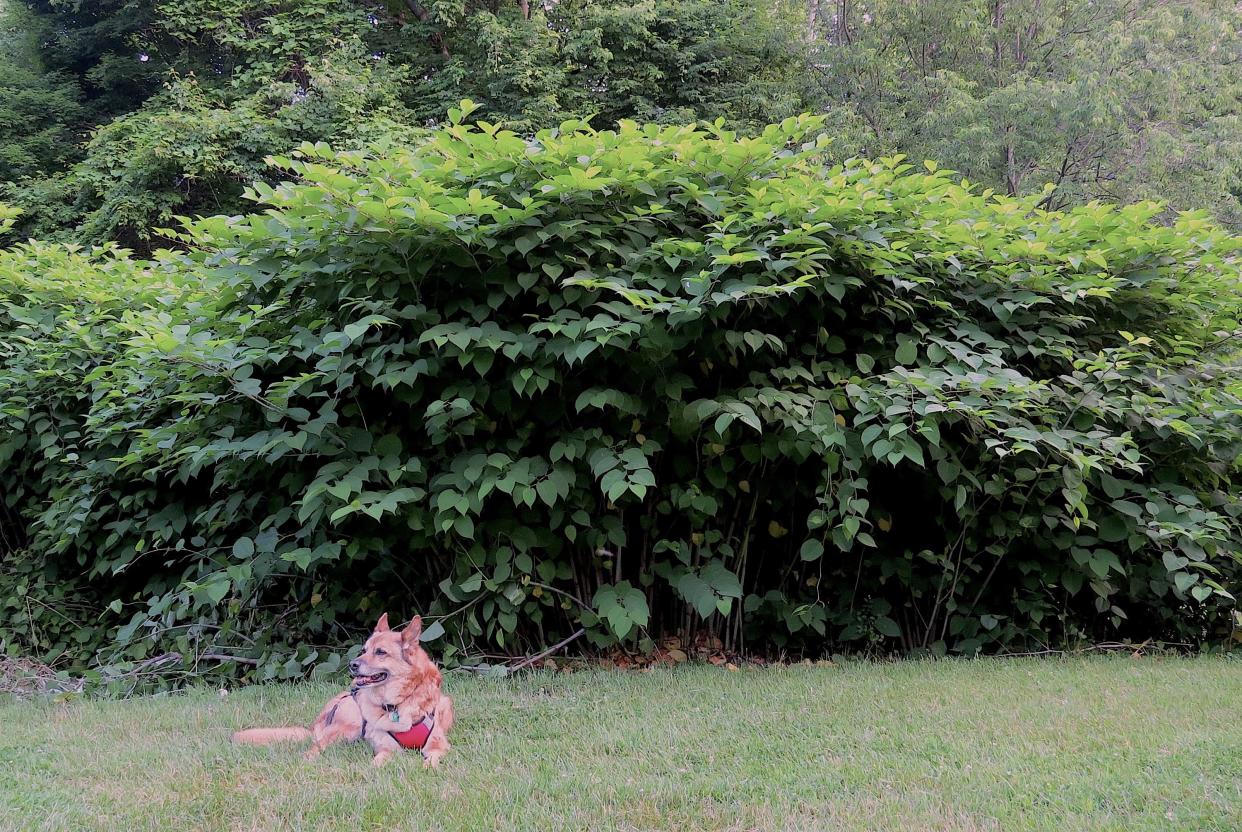From hobby to hell: Battling invasive species leads columnist to stinky tree of heaven

Invasive species are my life. They’ll probably be the death of me as well.
Battling them started out as a hobby of sorts. Like gardening. Except, instead of tending small pens of fruits, vegetables, and flowers, I took to the forests, roadsides, riverbanks, and meadows — plucking, digging, and hauling away trash bags laden with garlic mustard, poison hemlock, Japanese knotweed, multiflora rose, and other nasties.
Then I made the mistake of retiring. A hobby turned into an obsession.
Come foraging with Irv: Springtime foraging from the forest floor to the cereal aisle of Kroger
More: What is exciting about spring for Ashland area kids? Mostly everything
Shovels, pruners, saws, and trash bags were no longer enough; I had to acquire an arsenal of power tools, a flame thrower, and herbicides. I spent my Social Security checks on protective gear — full armor against cutting off an appendage or poisoning myself instead of the leafy invaders.

It all started with the basics — classic invasive plants. Small prey, like garlic mustard. Then it escalated to Japanese knotweed, a bamboo-like plant that sends roots down eight feet into the earth and rhizomes out 60 feet or more. The lateral roots produce new plants capable of sprouting through pavement. Besides that, knotweed generates new plants from fragments of the stems — which are often cut and spread down the road by mowing.
Invasive plants have survival strategies hard to defeat
Ultimately, I moved on to bigger game — the woefully misnamed tree of heaven. Perhaps the name comes from the fact that, when you crush the leaves, they stink to high heaven. Trees of heaven can grow to be 100 feet and, like many invasives, they’re obnoxiously prolific.
That’s something invasive plants tend to have in common — survival strategies that will drive you bonkers. They will crowd out — and in some cases poison — their native neighbors. Left unchecked, they will eradicate native flora, disrupt ecosystems, and eat small children.
That’s why I became involved. I couldn’t stand the thought of a world without native wildflowers and other vegetation and the native fauna they support.
Battling invasive species can be satisfying. It can also be frustrating. You go into it knowing you’ll never eradicate them, that garlic mustard will grow on your grave and knotweed roots will probably penetrate your coffin and drill holes through your decaying corpse.
Plus, it’s a learning curve — one in which you will never reach the apex. That’s because the “science” of fighting invasives is constantly evolving. Sometimes in the form of vicious online arguments among those dedicated to battling invasive flora.
(Ironically, as I sat writing this, I discovered a deer tick burrowing into the skin on my stomach. It most likely climbed aboard while I was in the woods yesterday afternoon pulling garlic mustard and multiflora rose.)
There's no easy way to kill tree of heaven
Anyway, if the learning curve doesn’t throw you, the process of trial and error surely will.
Case in point, about 15 years ago I found two big trees of heaven growing in the woods. I made the mistake of cutting them down. When felled or cut back in any way, baby trees of heaven will sprout from the roots in all directions — thousands of them. I spent the next seven years poisoning the sprouts as they emerged.
Unfortunately, poison is the only thing tree of heaven responds to. I’m not a fan of herbicides. I’m less of a fan of trees of heaven. The only effective way of killing them is to paint powerful herbicide around the trunk and let them die slowly.
It doesn’t help that there are people out there harvesting trees of heaven for lumber. Unchecked, this will result in monocultures, decimating native trees and the wildlife that depends on them.
Which is how invasive species got here in the first place. People imported them from overseas — out of sheer ignorance or for commercial purposes. Unfortunately our government prioritizes commerce over all other concerns and has turned a blind eye. There is very little regulation of invasive species. In fact, you can buy quite a variety — including Japanese barberry — from nurseries and the garden departments of big box stores.
At times, it seems like Mother Nature has gone into menopause, exhausted from decades of enduring the most invasive species of all — us. It’s like she’s getting her revenge by unleashing more and more invasive flora and fauna. Even the staunchest anti-invasive crusaders have given up on controlling species such as Japanese stiltgrass, lesser celandine, and Oriental bittersweet.
For now, I’ll keep on plucking, digging, and poisoning nonnative flora. But more and more I find myself wondering if it’s worth it. Maybe it’s time I found myself another hobby. Like kayak fishing for invasive Asian carp. It would be quite a challenge going after three-foot-long fish that can jump out of the water and knock you out of your boat.
This article originally appeared on Ashland Times Gazette: Invasive plants: Mother Nature can't stop unleashing her revenge

